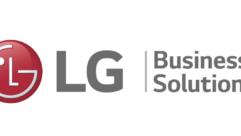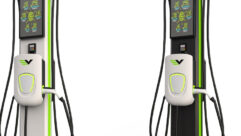
Picture This: Digital Signage
Sep 1, 2004 12:00 PM,
By Jeff Sauer
Mercury Online Solutions FRED software suite
Chances are you’ve heard something about digital signage. After all,
it’s become something of an industry buzzword, if not the next big
thing, at least for display makers. And why not? Digital signage has
cachet, a glamour that suggests that every retail store, cinema
complex, or transportation terminal can be as bright and eye-catching
as Times Square or Tokyo’s Ginza District.
However, unless you’re one of the few on the front lines of
technology and solving problems by assembling a variety of often
unrelated products, there’s also a good chance that installing a
digital signage infrastructure might be as mysterious as setting up
something like streaming video. Worse, after at least a couple of years
of hype and not all that much progress, digital signage may seem like a
technology still looking for a market that may never pan out.
Whatever digital signage may have been before, there are reasons to
start taking it seriously now. Most notably, the decreasing cost and
increasing availability of large flat-panel monitors make all of their
hypothetical uses more practicable, including digital signage. If
nothing else, digital signage represents a potential business
opportunity for the systems integrator.

Adtec Digital Soloist 3 digital media server
SOLVING THE PUZZLE
Admittedly, though the basic concept of digital signage is pretty
straightforward — whether it’s the huge LED-lit signs and
electronic billboards that brighten Times Square or simply the arrival
and departure flight information on an airport’s plasma monitors
— putting the pieces together may not be so clear. Like many
other emerging technologies, there are still a lot of claims, and
nobody really offers any off-the-shelf solutions, though a few
value-add companies are trying.
The bottom line is that digital signage is about better
communication and better marketing, replacing static information with
updateable information such as timely news reports, retail offers,
in-theater movie trailers, or just eye-catching motion video
advertisements in a busy retail mall. From there the size and scope of
an installation, as well as the pieces, can be diverse.
Depending on the needs of the client, digital signage configurations
can range from the straightforward, such as standalone kiosks, to a
complex system infrastructure controlled by dedicated software and
running over a wide area network. However, just about any
infrastructure — whether it’s that single point kiosk, a cinema
complex, a shopping mall, or a major sports arena — will involve
a few basic components.
Obviously, digital signage always ends with the display that the
public sees. Indeed, most of the hype about digital signage has come
from large-panel manufacturers looking to develop a broad business
opportunity. Yet while plasma and LCD panels are often used almost
synonymously with digital signage and are most logical in many ways,
any display can be connected to a digital source to show controlled
digital content, including front and rear projection and old CRT
monitors.
The harder questions center around how the content is displayed, how
the content gets to the monitor, and how it is controlled. The answers,
though diverse, all tend to involve some kind of player machine or
machines and some application that controls them and runs a
playlist.

In the simplest configurations of digital signage, both of those
functions can be performed by the same physical device. Adtec Digital’s
Edje or Soloist and Sony’s NSP-100, for example, are video appliances
with built-in operating systems capable of storing and running a
playlist of MPEG video clips, as well as graphical elements. With
built-in servers, the Adtec devices can even poll media servers over a
network connection and upload new playlists and new content. They can
also produce a helpful log file as backup for what has been played and
when as proof of broadcast to a possible client.
CONTROL ISSUES
What if you need to drive a group of displays at a facility? If
practical, you might use multiple video appliances or run a
distribution amplifier, though that’s not likely to be an option for a
sports arena with hundreds of monitors showing exactly the same thing.
Still, similar basic components apply, beginning with a server system
and a playback control application. The scale is simply much larger and
the tools more robust.
Clarity Visual Systems and Philips both support their large-screen
displays with software applications. Clarity’s SignSuite is a modular
suite that includes Show Builder, Scheduler, ShowStation, and
RemoteSwitcher utilities. Philips’s Adtraxion combines content
management, diagnostics, live programming, and players for display
types from large displays to cell phones.
On an even larger scale, Mercury Online Solution’s FRED software
suite is specifically built for digital signage to organize content and
deliver it to one, one dozen, or several dozen displays according to a
playlist schedule. Different versions of FRED can be used locally
within a local area network or can control remote infrastructures
around the globe, showing the same content at the same time or targeted
local content according to a schedule.
Of course, the larger the signage configuration, the more complex
and robust the server infrastructure needs to be. If media servers are
playing directly to display devices (which might be the case for a
sports arena with dozens of monitors showing the same content) rather
than storing and forwarding, they’ll need to be configured to move the
larger data block sizes of enormous file sizes of digital media, as
compared to conventional data types, to ensure smooth video
playback.
Generally speaking, control of digital signage infrastructure,
especially larger ones, is done over a network connection that allows
remote access, updating, and monitoring of signage infrastructures.
It’s possible to use optical media, as might be the case with kiosks,
but with network technology becoming quite robust, it usually offers
the most flexibility.
In many ways, the easy part is laying out the basic building blocks.
As with any emerging technology, however, the devil is in the details.
For example, some video appliances are built around MPEG decoders, and
that’s great if your content is all MPEG video. But what happens when
the client decides to add text elements, a ticket news feed, or Flash
content? Indeed, the content itself often requires constant attention,
and keeping signage content up to date and attractively designed
typically requires a production budget. There are also questions of
system reliability, backup, and redundancy, and as with any network
system, there are major concerns with security. That’s particularly
true when you include billing-oriented log files on the server and are
keeping track of thousands of dollars worth of time and content.
SIGNAGE UP AHEAD
This is by no means a comprehensive look at digital signage. This
market segment is just beginning to emerge from the hype as a real
business opportunity, and there are plenty of questions to be answered
as contractors begin to explore the possibilities. During the next
several months, Sound & Video Contractor will explore many
of those questions in greater depth. For now it’s time to start asking
questions and building a repertoire that could expand your business
opportunities.
Jeff Sauerwrites the “Picture This” column
for Sound & Video Contractor and is a
contributing writer for Video Systems. He’s a video producer, an
industry consultant, and director of the Desktop Video Group, a video
and computer products testing lab in Cambridge, Massachusetts. He can
be reached at [email protected].









